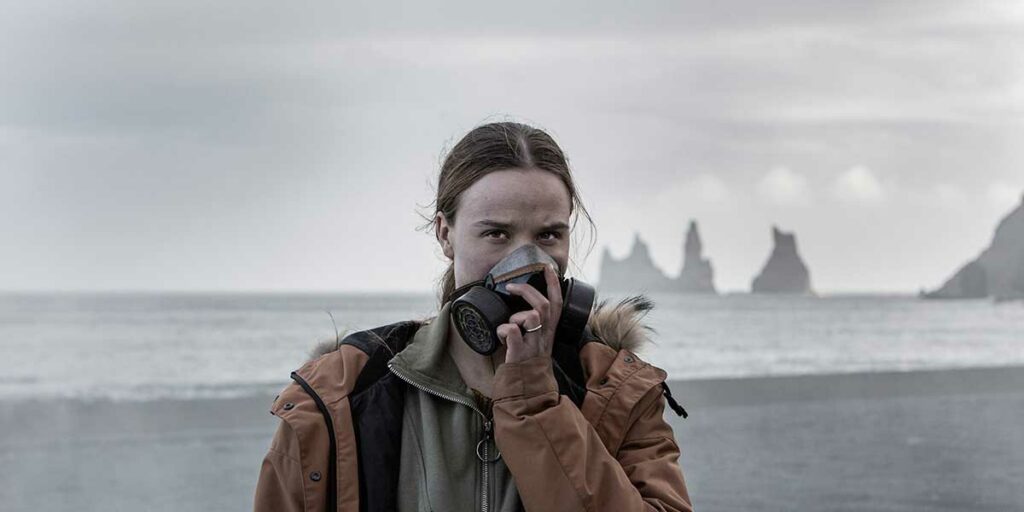Netflix ’s Katla is an ethereal Nordic noir that uses atmosphere and character development to craft a compelling and intriguing slow-burning thriller.
Though many will think of Stieg Larsson’s Millenium series (remember The Girl With the Dragon Tattoo?)or Jo Nesbø’s chilling thrillers when imagining Scandinavian literature and cinema, in recent years Scandinavian cinema has grown to reflect its very own genre: Nordic noir. With its population of about 360.000 people, Iceland may be a small part of Scandinavia, but it sure knows how to produce tantalizing tv series. If you have binge watched The Valhalla Murders (2019-20) and/or are a keen follower of Trapped (2015-ongoing), I can assure you that Katla will not disappoint. Netflix’s newest Icelandic addi(c)tion is a true slow-burning thriller set to the atmospheric hues of a fantastical Nordic noir.
The small village of Vik, in the South of Iceland, is home to Katla, a volcanic glacier that has been continuously erupting for over a year. The town’s residents have dwindled to the bare minimum to keep it functioning and you need a special permit to enter the area. Imagine their surprise and incomprehension when one day a woman appears, covered in sooty clay and suffering from hypothermia, with no memory save her name. While the cynical and down to earth residents set about identifying the woman, more clay-clad people start to appear coming down from the volcano. Through the residents’ individual interactions with these strange appearing people, it soon becomes clear that something more bizarre and mysterious is going on.
Katla is a series that is not just well put together for its simplistic atmosphere and stellar performances, it is the whole shebang from dialogue to sound editing. Even though the first two episodes might appear to be a bit slow, it sets a steady pace for the rest of the episodes to take their time developing. The series is a prime example of how “less is more”, the narrative threads of the plot ramifying with each passing episode and, though they never fully converge, in the end it turns out there was never a need for them to merge. The calm tones of the Icelandic language, combined with the Icelanders overall no-nonsense attitude, make the plot credible and incredibly human. The series’ focus on the residents’ relation to the humanoids, instead of them being an alien-like enemy, is a refreshing and more realistic take on the ancient folk tale from which it has been adapted.

Throughout the series, the viewer, like the residents, remains guessing what the role of the humanoids in their midst is and how they keep appearing. By the end, you realise exactly why the beginning of the series appears a bit muted and slow, the time is needed to fully form the personalities and personal lives of the characters and to reveal their current situation, as well as their past and future. Each of the characters has their own backstory and own problems that need to be dealt with, of which the humanoids obviously have to play a part as we learn by the end. Katla thus turns away from being a futuristic sci-fi thriller and turns into something more homemade and intimate, revealing the Nordic folkloric traditions that are at Iceland’s roots.
As the residents each struggle with their inner demons, it is fairly easy to see the bigger picture overlaying all the events that are happening in Vik: acceptance of the past and the present. This theme in roughly the same format must seem familiar for those who have watched the sensational New Zealand series Glitch, where people return from the dead and attempt to make peace with their past. The stunningly bleak ambience in combination with the beautiful sound (Huldar Freyr Arnarson, Rams, The Oath) make it a very similar series to the amazing German Netflix production Dark, in which a time wormhole between different ages and universes brings on the apocalypse. With its excellent character development and thrilling narrative build-up, Katla is a highly atmospheric Nordic noir best enjoyed with a bottle of pinot noir on a cosy, rainy, Sunday afternoon.

